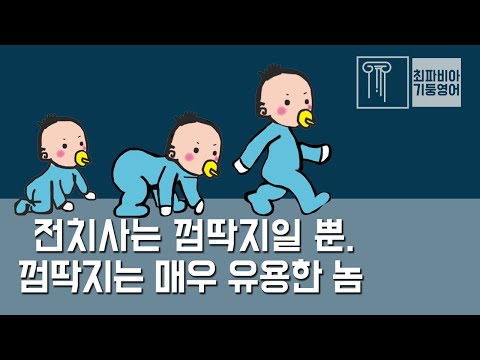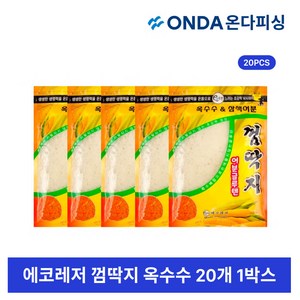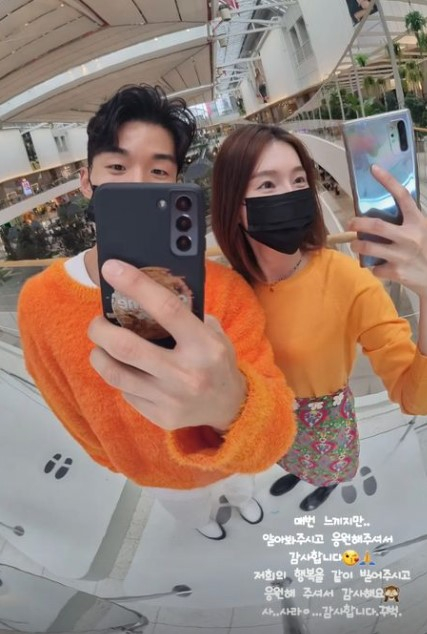껌딱지 영어로
껌딱지란 무엇인가?
껌딱지는 껌과 떡이 합쳐진 형태의 과자로, 한국에서 오랜 전통을 갖고 있습니다. 그 이름은 먹으면 입안에서 딱딱하게 씹히는 소리가 나기 때문에 생긴 이름입니다. 껌딱지는 국내 외에서도 녹차맛, 딸기맛 등 다양한 맛과 함께 즐겨지고 있습니다.
껌딱지의 역사
껌딱지는 고려 시대부터 한국에서 제작되었으며, 당시 신선한 떡을 보존하기 위해 만들어진 과자였습니다. 초기에는 껌밥이라고 불렸지만, 조선 시대에 ‘껌딱지’라는 이름으로 사용되었습니다. 껌딱지는 한국 전통 간식 중 하나로 자리 잡았으며, 오늘날에도 꾸준한 인기를 얻고 있습니다.
껌딱지의 재료와 제조 과정
껌딱지는 주로 찹쌀가루와 메주의 혼합으로 만들어집니다. 찹쌀가루와 메주를 적당한 비율로 섞은 후 반죽하여 원하는 형태로 만들고 구웁니다. 껌딱지는 전통적으로 떡틀을 사용하여 만들지만, 현대에는 다양한 모양과 크기로 제작됩니다. 제조 과정에는 한국 전통 기술과 노하우가 필요하며, 시간과 정성이 요구됩니다.
껌딱지를 구매하는 방법
껌딱지는 한국의 전통 간식점, 대형 슈퍼마켓, 온라인 마켓 등에서 구매할 수 있습니다. 여러 가지 맛과 크기의 껌딱지가 판매되며, 개별 포장된 제품이나 일정량을 포장한 상품을 찾을 수 있습니다. 온라인 쇼핑몰에서도 껌딱지를 쉽게 구매할 수 있으며, 국제 배송이 가능한 경우 세계 각지에서도 구매할 수 있습니다.
껌딱지의 맛과 특징
껌딱지는 입안에서 딱딱한 식감을 느끼며, 달콤한 맛과 향긋한 떡향이 특징입니다. 뛰어난 씹는 재미와 부드러운 껌의 조합은 껌딱지를 독특하고 매력적인 간식으로 만들어줍니다. 껌딱지의 맛은 매우 진한데, 이는 껌의 특유의 맛이 가미됨으로써 생겨납니다. 껌딱지는 고소한 맛과 함께 즐길 수 있는 녹차, 딸기, 초콜릿 등 다양한 맛으로 제공됩니다.
껌딱지의 영양가와 건강에 미치는 영향
껌딱지는 찹쌀가루와 메주 등으로 만들어지며, 이에는 단백질, 탄수화물, 식이섬유, 비타민 등 다양한 영양소가 함유되어 있습니다. 껌딱지는 에너지를 공급하고, 소화를 도와주며, 신진대사를 촉진하는 데 도움을 줄 수 있습니다. 그러나 너무 많은 껌딱지를 섭취할 경우 과도한 열량 섭취나 체중 증가의 우려가 있으므로 적정량을 유지하는 것이 중요합니다.
껌딱지의 다양한 사용법
껌딱지는 주로 간식으로 섭취되지만, 다양한 사용법이 있습니다. 고객들은 껌딱지를 약과 함께 섭취하기도 하고, 커피나 차와 함께 즐길 수도 있습니다. 또한 샐러드나 디저트에 토핑으로 사용하거나, 디저트나 음료의 장식으로 활용하기도 합니다. 껌딱지는 자유롭게 창의적으로 활용할 수 있는 다재다능한 간식입니다.
껌딱지와 관련된 한국의 다른 전통 간식들
한국은 다양한 전통 간식으로 유명한데, 그 중에는 껌딱지와 관련된 간식들도 있습니다. 예를 들어, 인절미, 떡꼬치, 떡볶이, 호두과자 등이 있으며, 이들 간식은 한국의 전통적인 맛과 특징을 갖고 있습니다. 껌딱지와 함께 이러한 간식들도 한 번 시도해보세요!
껌딱지의 인기와 세계적인 인식
껌딱지는 오랜 역사와 전통을 갖고 있어 한국인들 사이에서 인기를 얻고 있습니다. 하지만 최근에는 껌딱지가 한국 문화를 알리는 향수로 세계 각지에서도 사랑받고 있습니다. 관광객들이 한국을 방문할 때 껌딱지를 구매하여 소지하며, 한국의 전통적인 맛을 경험하고자 하는 것이 일반적입니다. 이러한 껌딱지의 세계적인 인식은 한국의 전통 간식을 보다 폭넓게 알리는 데 도움을 줍니다.
FAQs (자주 묻는 질문)
Q: 껌딱지는 어디서 구매할 수 있나요?
A: 껌딱지는 한국의 전통 간식점, 대형 슈퍼마켓, 온라인 마켓에서 구매할 수 있습니다. 온라인 쇼핑몰을 통해서도 껌딱지를 구매할 수 있으며, 국제 배송이 가능한 경우 세계 각지에서도 구매할 수 있습니다.
Q: 껌딱지는 어떻게 먹어야 할까요?
A: 껌딱지는 주로 간식으로 섭취되지만, 다양한 사용법이 있습니다. 단독으로 먹거나, 약과 함께 먹거나, 커피나 차와 함께 즐기거나, 샐러드나 디저트에 토핑으로 사용하거나, 디저트나 음료의 장식으로 활용할 수 있습니다. 자신만의 창의적인 방법으로 껌딱지를 활용해보세요!
Q: 껌딱지의 영양가는 어떤가요?
A: 껌딱지에는 찹쌀가루와 메주 등으로 만들어집니다. 이에는 단백질, 탄수화물, 식이섬유, 비타민 등 다양한 영양소가 함유되어 있습니다. 껌딱지는 에너지를 공급하고, 소화를 도와주며, 신진대사를 촉진하는 데 도움을 줄 수 있습니다.
Q: 껌딱지는 얼마나 오래 보관할 수 있나요?
A: 껌딱지의 보관 기간은 제조일로부터 약 1개월 정도입니다. 하지만 제조일과 저장 환경에 따라 차이가 있을 수 있으므로, 가능하면 빠른 시일 내에 섭취하는 것이 좋습니다.
Q: 껌딱지는 알레르기 반응을 일으킬 수 있나요?
A: 껌딱지는 찹쌀가루와 메주를 사용하여 만들어지므로, 고단백 식품에 알레르기 반응이 있는 사람들에게는 주의가 필요할 수 있습니다. 알레르기 반응이 있는 경우 성분을 확인하고 식이 조절을 통해 섭취하는 것이 좋습니다.
사용자가 검색한 키워드: 껌딱지 영어로 Clingy
Categories: Top 30 껌딱지 영어로
스텝 01-09 | 전치사, 구동사는 껌딱지일 뿐. 껌딱지는 매우 유용한 놈 |#영어강의
여기에서 자세히 보기: p1.paulantonybuilders.com
Clingy
Clingy behavior, characterized by an excessive need for attention and constant proximity, can be observed in various cultures and relationships. In the context of the Korean culture, understanding how clingy behavior is perceived and managed is of utmost importance. In this article, we will explore the concept of clinginess in Korean society, its root causes, its implications on relationships, and offer effective strategies to overcome this behavior. So, let’s delve deeper into this topic.
Understanding Clingy Behavior in Korean Culture:
Clinginess, or “jeongjado” (정자도) in Korean, refers to the tendency of an individual to excessively seek emotional and physical closeness to another person. The concept of “jeong” (정), which means deep emotional attachment, is deeply rooted in Korean society. While this emotional attachment can strengthen relationships, it can also lead to clingy behavior if taken to extreme levels. Koreans value harmony and interconnectedness within relationships, but when boundaries are crossed, problems may arise.
Causes and Implications of Clingy Behavior in Korean Relationships:
Several factors can contribute to clingy behavior in Korean relationships. These factors include insecurities, fear of abandonment, cultural expectations, and communication difficulties. Fear of abandonment can lead individuals to seek constant reassurance and validation from their partners, resulting in clingy behavior. Cultural expectations regarding loyalty, devotion, and maintaining close relationships can also add pressure to the individual, leading to clingy tendencies. Moreover, miscommunication or unexpressed expectations can create misunderstandings and further exacerbate clinginess issues.
The implications of clingy behavior in Korean relationships can be far-reaching. While early stages of relationships often involve intense closeness, excessive clinginess can cause discomfort, frustration, and ultimately strain or even break the relationship. It can impose emotional burdens on the partner and hinder personal growth and independence. Recognizing these implications is crucial for both the clingy individual and their partner.
Managing Clinginess:
Overcoming clingy behavior requires self-reflection, open communication, and establishing healthy boundaries. Here are some effective strategies for managing clingy behavior in Korean relationships:
1. Self-Reflection: The first step to overcoming clinginess is introspection. Identify the root causes of clingy behavior, such as insecurities or fear of abandonment. Working on self-esteem and personal development can help reduce clinginess and foster healthier relationships.
2. Communication: Open and honest conversations with your partner can be instrumental in addressing clingy behavior. Discussing each other’s needs, expectations, and boundaries will help establish a healthy balance in the relationship. Cultivate trust and maintain open lines of communication to express concerns and find constructive solutions.
3. Personal Space and Independence: Encouraging personal space and independence is vital for both partners. Maintaining individual hobbies, interests, and friendships can help the clingy individual feel more secure, reducing the need for constant attention from their partner.
4. Building a Supportive Network: Developing a strong support network can alleviate clinginess by providing additional sources of emotional support. Friends and family can offer advice, encouragement, and help broaden one’s perspective, reducing over-reliance on a single person.
5. Focus on Self-Care: Prioritizing self-care and self-love is fundamental in reducing clinginess. Engage in activities that boost self-esteem, self-confidence, and overall well-being. This will enable individuals to feel more secure in themselves and their relationships.
6. Seek Professional Help: In cases where clingy behavior becomes overwhelming, seeking counseling or therapy may be beneficial. A professional can provide guidance and help individuals navigate through deeper emotional issues.
FAQs:
Q: Is clingy behavior limited to romantic relationships?
A: While clingy behavior most commonly arises in romantic relationships, it can also be observed in friendships, family connections, and even professional relationships.
Q: How can insecurities be addressed to reduce clinginess?
A: Addressing insecurities requires self-awareness and self-reflection. Engaging in self-improvement activities, practicing self-love, and seeking professional help can all contribute to overcoming insecurities.
Q: What cultural factors contribute to clingy behavior in Korean society?
A: The cultural emphasis on loyalty, devotion, and interconnectedness within relationships can contribute to clingy behavior in Korean society. Cultural expectations of maintaining close ties and constant availability can further intensify clingy tendencies.
Q: Can clingy behavior be cultural misunderstanding in non-Korean relationships?
A: Yes, clingy behavior can sometimes be a result of cultural misunderstandings, as cultural norms and expectations regarding closeness vary across different societies. Effective communication is crucial in understanding and addressing such differences.
In conclusion, understanding clingy behavior in Korean society is the first step in managing and overcoming it. By recognizing the causes, implications, and implementing effective strategies, individuals can develop healthier relationships and foster personal growth. Open communication, establishing boundaries, and focusing on self-care are key in moving away from clinginess, allowing for harmonious and balanced relationships.
주제와 관련된 이미지 껌딱지 영어로

껌딱지 영어로 주제와 관련된 이미지 33개를 찾았습니다.





![강지 (1집) - 내사랑 껌딱지 (2010年) [작사:홍주현 / 작곡:염철목 / 편곡:염철목] - YouTube 강지 (1집) - 내사랑 껌딱지 (2010年) [작사:홍주현 / 작곡:염철목 / 편곡:염철목] - Youtube](https://i.ytimg.com/vi/DaWhAoldSBM/maxresdefault.jpg)

![강지 (1집) - 내사랑 껌딱지 (2010年) [작사:홍주현 / 작곡:염철목 / 편곡:염철목] - YouTube 강지 (1집) - 내사랑 껌딱지 (2010年) [작사:홍주현 / 작곡:염철목 / 편곡:염철목] - Youtube](https://i.ytimg.com/vi/oFyWYS6thMQ/hq720.jpg?sqp=-oaymwEhCK4FEIIDSFryq4qpAxMIARUAAAAAGAElAADIQj0AgKJD&rs=AOn4CLB1OHKR8V36e9f_QDN9wTfVxSLBRw)
![구문독해력 향상법] 교감독(交感讀) : 시험칠 때 지문에 껌딱지처럼 붙는 법 SYNTECH #14 - YouTube 구문독해력 향상법] 교감독(交感讀) : 시험칠 때 지문에 껌딱지처럼 붙는 법 Syntech #14 - Youtube](https://i.ytimg.com/vi/VYKX2CtROCI/maxresdefault.jpg)






![정신나간 영어] #6. Be 동사의 껌딱지인 형용사 - YouTube 정신나간 영어] #6. Be 동사의 껌딱지인 형용사 - Youtube](https://i.ytimg.com/vi/58TLTPhFFW8/hqdefault.jpg)






![책속의 아이디어] 씹던 껌을 예술로... '껌딱지 예술가' 벤 윌슨 < 행정‧자치 < 정치 < 기사본문 - 더리포트 책속의 아이디어] 씹던 껌을 예술로... '껌딱지 예술가' 벤 윌슨 < 행정‧자치 < 정치 < 기사본문 - 더리포트](https://cdn.thereport.co.kr/news/photo/201609/11_74386_54570_3813.jpg)



![티전드] 아빠 껌딱지 딸에서 딸 껌딱지 아빠로ㅠㅠ😂 처음으로 둥지탈출하는 딸이 걱정돼서 안절부절하는 김우리 | #둥지탈출3 #Diggle - YouTube 티전드] 아빠 껌딱지 딸에서 딸 껌딱지 아빠로ㅠㅠ😂 처음으로 둥지탈출하는 딸이 걱정돼서 안절부절하는 김우리 | #둥지탈출3 #Diggle - Youtube](https://i.ytimg.com/vi/o9MqLzQUCZE/maxresdefault.jpg)



![명탐견 오드리 추리는 코끝에서부터 미리보기 [교보 eBook] 명탐견 오드리 추리는 코끝에서부터 미리보기 [교보 Ebook]](https://preview.kyobobook.co.kr/preview/003/epb/834/4801160946834/images/incover.jpg)
Article link: 껌딱지 영어로.
주제에 대해 자세히 알아보기 껌딱지 영어로.
- “껌딱지 남자친구, 여자친구”를 영어로? – OWL Dictionary
- 껌딱지, TV 앞 붙박이 영어로.. – 네이버 블로그
- 이것은 영어(미국)로 무엇이라고 하나요? “엄마 껌딱지” – HiNative
- ‘지나치게 엉겨붙는 남친/여친’ 영어로 – 티스토리
- 클라소-classo – “일심동체”를 영어로 어떻게 표현 … – Facebook
- 스텝 03-04 | 전치사 in on at. 제대로 응용하기! | #영어강의
- 떼어낸 영어로
더보기: https://p1.paulantonybuilders.com/category/blog